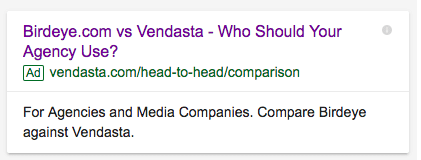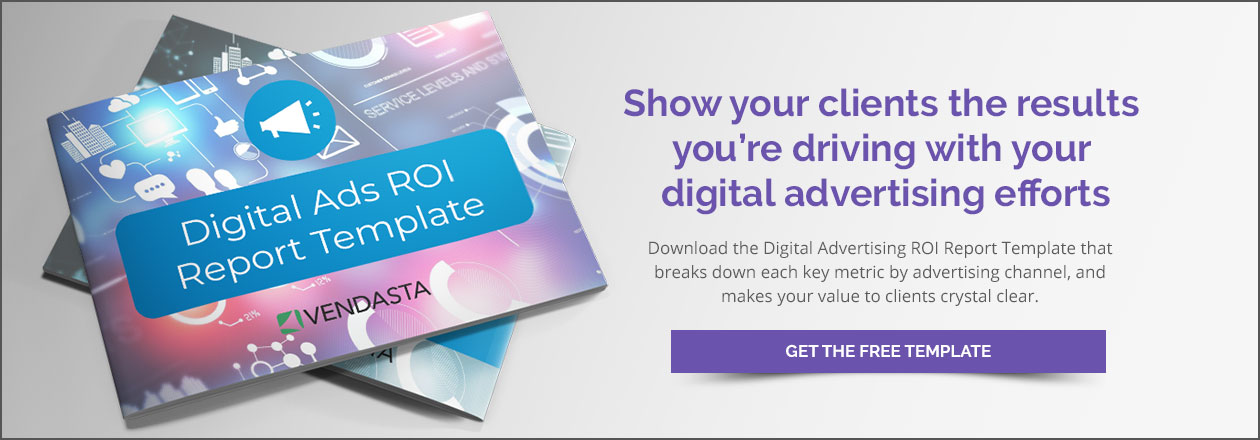How Agencies Can Win At AdWords: Lessons Learned from Spending $80K
Good old Adwords. Most advertisers have a love/hate relationship with Adwords. It has the power to drive in quality leads with high sales potential, but it’s super expensive, often inconsistent, and ROI is tough to predict month-in and month-out.
I speak from experience—I’ve been using Adwords every single day since March with a goal to bring in high quality leads at the lowest cost. As a demand generation strategist, this is my main KPI across the paid channels I manage. If I fail to show successful results month over month, our CMO starts with the pinkie finger, next an arm, then a leg, and then finally the head.
Now that I’m down to nine fingers, I was inspired to solve the Adwords puzzle and make results measurable and more predictable. So for all of you B2B marketers out there, I don’t want what happened to me to happen to you. I’m going to share my hacks on how to win at Adwords by showing you how to increase your lead volume and decrease your cost per lead at the same time.
I’ve been able to:
- Increase marketing qualified leads (MQLs) by 150%
- Cut our cost per lead (CPL) by %150
Before I took over, we were averaging 50 leads per month with a budget of $10K. With the same budget, we’re now pulling in 125 leads per month.
Need to generate new leads for your business? Get Vendasta's Digital Advertising Lead Gen package!
Table of Contents
The Importance of an AdWords Advertising Strategy
PPC Ad Copy Tips: Creating Ads that Get Clicked By the Right People
PPC Landing Page Tips: Creating Pages that Convert
PPC Metrics Tips: The AdWords Metric You Should be Following (but probably aren’t)
PPC Campaign Tips: Creating Cheap AdWords Campaigns with High Close Rates
Your Daily AdWords Maintenance Checklist
The Importance of an AdWords Diligence
Adwords isn’t for the faint at heart. To do it well, it takes to a complete marketing effort. It’s not just a set-it-and-forget-it, add your keywords, create some ads, and hope for the best kind of thing. If you want to be successful at it, you have to manage it daily. You have to understand ad copy. You have to be diligent. And you have to be ready to work.
[clickToTweet tweet="#Adwords isn't a set-and-forget platform. Success comes from diligence and strategy. #PPCtips" quote="#Adwords isn't a set-and-forget platform. Success comes from diligence and strategy. #PPCtips"]
Silver lining: the more work you do in the beginning, the less work you’ll do overtime. Your campaigns will get to a point where they maintain their integrity, aside from some daily maintenance tasks.
So what will you get with these Google AdWords tips?
I’m going to show you:
- How we doubled our leads and cut our CPL in half
- How to create B2B Adwords ads and landing pages that convert
- How to create cheap campaigns with high close rates
- What important metric you might not be following, and
- Daily maintenance tips to keep your account greased
Let's get on with it, shall we?
PPC Ad Copy Tips: Creating Ads that Get Clicked By the Right People
I’m about to drop some monkish knowledge upon you—basic yet profound. There’s one simple formula to ensure the right people are clicking on your ads and the wrong people aren’t. Both equally critical.
When the wrong people click your ad, you’re losing money. Despite the keywords you’re bidding on, if your ads aren’t speaking to your audience directly, you’re in trouble. You might as well go to the washroom right now and flush half of your marketing spend down the toilet.
I’m serious. Check your Search Terms tab, and look at some of the search queries your ads are showing up for. It’ll hurt your soul.
Our Search Terms tab in March and April.
When I took over our Adwords account, I quickly observed more than 60% of our budget was going toward search terms Vendasta had no business being in. More often than not, it was people looking for actual white labels, and not the white label software we provide.
Google is a vast universe with billions of searches every day, so chances are your ads are going to show up in many unrelated queries.
#1 Use negative keywords to eliminate irrelevant traffic
While you scrub through your Search terms tab, check off each keyword that is irrelevant to your business, and hit "add as negative keyword, so your ads aren't showing up under terms like "2766 plastic label white 3 4 x 8."
#2 Target with your ad copy
How do you get the right people clicking your ads and keep the wrong people minding their own business? Simply use the name of your target audience/industry in your copy.
By doing this you’re telling your potential clients this ad is for them, while telling others to “move on, there’s nothing to see here.”
Example: Vendasta’s target market is you guys—agencies and resellers. In the example below, we’re using “white label software” as our keyword, and the ad looks like this:

Properly targeted ad copy
As opposed to something like this:

Improperly targeted ad copy
Do you see how the smallest and simplest detail can make all the difference in the world on who you’re inviting to click on your ad? If you’re not already doing this simple truth, I implore you to start—it will make a colossal difference in getting more conversions at scale.
[clickToTweet tweet="Call out your target audience directly in your #AdWords ad copy for qualified conversions #PPCtips" quote="Call out your target audience directly in your #AdWords ad copy for qualified conversions #PPCtips"]
PPC Landing Page Tips: Creating Pages that Convert
#3 Don’t send traffic to your company homepage
Unless it’s written with ad copy, don’t send people to your website from your ads. Most sites are written with informational rhetoric that isn’t designed for a direct response. Which is crazy to me, but that’s another post for another day.
Create a dedicated landing page for each ad. This way, you can ensure the entire page is focused on driving a specific action, like a form-fill conversion.
#4 Ad copy is a must
On your landing page, you want to sell, sell, sell—which shouldn’t be a huge hurdle. The best part of advertising on Google is the searcher is seeking to learn more about your products with a higher intent for action versus a person randomly scrolling through Facebook who clicks an ad.
They’re already in the buying mood—there’s no need to dance around the fact that you’re pushing them toward a form-fill. Sell your agency with your best, hard-hitting ad copy. Don’t give them time to think, just keep leading them down the slippery slope of desire to a juicy CTA.
#5 Make them conversion-happy
Make it easy for your traffic to convert with multiple ways to do it. The whole purpose of your campaign is to get that conversion. Have anchors that drive users to the form or CTA. Use arrows or directional cues.
We use an awesome tool from LinkedIn that autofills the user’s business information into the form. No work equals more conversions. Click here if you want it.
#5 Back up your words
In your landing pages, make sure you show the user your credibility. There’s a lot of rhubarb businesses out there that create mistrust in your potential clients. So don’t be shy to display your agency’s awards, top brands you work with and client testimonials. They go a long way in gaining trust.
Example: In Vendasta landing pages, we include a small section with our recent awards to help prove credibility and legitimacy.
#6 Crystal clear Call-To-Actions
Make sure your CTA is crystal clear. It’s for all the marbles. If you’re not clear on what you want them to do, chances are they won’t be either. Show me a shitty CTA, I’ll show a tragedy.
Recommended Reading: How I Learned to Stop Worrying and Love the Landing Page (and Their Best Practices)
PPC Metrics Tips: The AdWords Metric You Should be Following (but probably aren’t)
#7 Follow the Search Lost IS (rank) metric
Add the Search Lost IS (rank) column to your dashboard (IS stands for Impressions Shared). This metric shows the percentage of times your ad didn't appear in search because of poor ad rank.
I love this metric because it gives you a view of the efficacy of your campaigns at the highest level. If your Search Lost IS percentage is high, your ads aren’t appearing in the SERPs when people type in the keywords you’re bidding on. You’re losing out on a lot of conversions.
[clickToTweet tweet="Add the Search Lost IS (rank) metric to your #AdWords dashboard to uncover lost conversions #PPCtips" quote="Add the Search Lost IS (rank) metric to your #AdWords dashboard to uncover lost conversions #PPCtips"]
Why aren’t they appearing? Due to poor ad rank, your ads are getting beat out in the auction by competitors with higher ad ranks.
What to do about it? Since we know ad rank is determined by max CPC x Quality Score (QS), you’ve got some analysis to do either on your bids or Quality Score.
If it’s the bid, run some small tests in the ad groups in question by raising the CPC incrementally. Track and measure—if your Search Lost IS decreases, then you’ve solved the problem.
If it’s the Quality Score, you’ve got a longer road ahead of you. Run the typical QS diagnostics, assess and implement. It can be a number of different combinations from LPE to match types to ad copy, which is yet another post for another day. I won’t leave you totally hanging though...
#8 Make use of ad extensions—seriously
One of my biggest AdWords tips is don’t overlook ad extensions. Not only do they provide more real estate to communicate your offering, Google also gives weight to ads that use them. Ad extensions are proven to increase CTR, which is one of the main criterions in determining QS.
Let me also recommend diving into your auction insights reports, at various levels (campaign, ad group, ads etc.) to see how competitors are performing. Once you have an understanding of who is winning the impressions, you can analyze their ad copy and landing pages and outwit them next time around.
NOTE: I want to be clear that Search Lost IS is a case-by-case situation. If you’re in a super competitive auction, like “email marketing,” it could just be the sheer volume of ads that’s causing lost impressions. So before you start fiddling around, first check your ROI metrics—they’re always your best barometer on how you should proceed.
Recommended Reading: ROI Analysis: Choosing Digital Advertising Metrics that Matter
PPC Campaign Tips: Creating Cheap AdWords Campaigns with High Close Rates
Looking for AdWords tips on your actual campaigns? The keyword for success here is “competition.” In other words...
#9 Bid on your competitor's name
Bid on your competition’s name. Unless it’s a generic name like “The Marketing Agency,” I can almost guarantee you the suggested bid will be in the $0.50-$1.00 CPC range. Gold, right?
There’s two ways to make a competitor campaign. The half-ass way and the Real Deal Holyfield way. The half-ass way will get you half-ass results. Real Deal Holyfield will get you wins. So let’s focus on Holyfield.
Recommended Reading: How Digital Advertising Spillover Affects your Organic SEO
#10 Call our your competitor in the ad headline
When you create an ad, compare your business against your competitors’ smack dab in the headline. Bidding on a competitor’s name is not a new thing, but 99% of the ads I see have a silly, generic message that has nothing to do with their competitor other than that they’re in the same industry.
Remember the searcher is looking specifically for that company. Chances are anything that doesn’t have its name in the headline will be white noise.
This is an example of a competitor ad we use:

Vendasta vs Birdeye Competitor Ad
#11 Turn your landing page into a competitor showdown
After the user clicks, you can’t take them to some John Doe landing page that lists the features and benefits of your agency. This is a competition! Get your hands dirty, do the research on your competitors—call them for a demo, find out everything you can about their services and match them up to yours in the form of a showdown page.
Competitor campaigns like these will get you the results you’re looking for. Low cost per click, high potential for closes.
This Birdeye campaign is by far our best performing campaign when measured by the godfather of ROI metrics, Cost Per Acquisition.
[clickToTweet tweet="Bet on your competitors! Vendasta's PPC campaign with the best ROI is a competitor campaign. #AdWords #PPCtips" quote="Bet on your competitors! Vendasta's PPC campaign with the best ROI is a competitor campaign. #AdWords #PPCtips"]
Recommended Reading: Advertising Conquest Campaigns: How to Target Competitors’ Customers
Your Daily AdWords Maintenance Checklist
I’m going to share list of the things that need to be done every single day in order to keep your account optimized. It’s like checking your car’s dashboard before you go for a drive. How’s my gas? Is the oil light on? Is there an engine warning? What’s my mileage at? Etc.
So every day, open up your Adwords dashboard, check all your lights and dials to ensure the machine is set up for a good day on the road.
1. Check Search Terms from yesterday’s search queries.
Anything that doesn’t align with your business, add it as a negative keyword. That search or one’s similar to it (using Broad Match) will never get your ads served to it again. Money back in your pocket. 60% of our budget went to searches that had zero relevance to our business.
2. Check Search Terms for keywords you’re not yet bidding on
Sometimes keywords you’re unaware of come through that are relevant to your business. Add it as a keyword to the appropriate ad group.
3. Follow each keyword’s performance diligently (QS is usually the best benchmark)
Kill the one’s that are costing more than they’re making you. It’s so easy to forget them, and let them sit there and rot. It’s not uncommon to have many keywords under-performing. They add up in a big way.
4. Follow each keyword closely
If one is performing consistently at a high level, it’s time to break it out its ad group, and give it’s own campaign and budget. Don’t let it sit in the existing ad group and share impressions with other keywords.
5. Check Search Lost IS
If you’ve noticed it’s increased, make note of it. If it continues to climb, you’ve got some analysis to do.
What you just read is an easy B2B formula that you can to implement today to start bringing in more leads at a lower cost. If you have any questions, feel free to reach out to me directly at jtaylor@vendasta.com.



